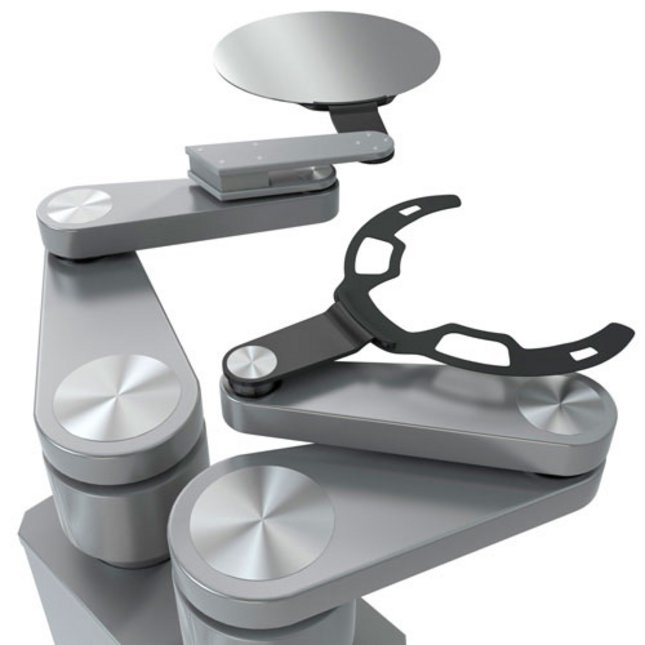Researcher in the Spotlight: Rick Baade
Design, realization and testing of an in-vacuum substrate handling robot
"I’m Rick Baade from the Control Systems Technology research group in the Department of Mechanical Engineering. My research is geared to the design, realization and testing of an in-vacuum substrate handling robot. These robots usually have three degrees of freedom in cylindrical coordinates, namely R ϕ and Z, an example of which is shown in figure 1. Focusing on contamination control, minimizing particle and molecular contamination while maintaining a low moving mass and high availability, this project is executed in collaboration with VDL-ETG."

Alternative kinematics
"The contamination behavior of substrate handling robots is mainly determined by the contamination seals used in the system. The seals applied in currently available high-performance robots significantly increase the mass and complexity of these robots. Moreover, the majority of commercially available robots contain SCARA type kinematics. So our approach is firstly to consider alternative kinematics to provide the required stiffness to the end-effector with less moving mass compared to a conventional SCARA type robot. Secondly we try to reduce complexity of the system and eliminate the main sources of contamination, which allows for simplification of the required contamination seals."
Test set-up
"The main challenges we face are the stringent volume claim requirements, specifically in terms of the available height in combination with the relatively long reach and small containment radius requirements. These aspects make it difficult to provide sufficient stiffness in the out-of-plane directions at the end-effector while maintaining a low mass system. Adding the high cleanliness requirements increases the complexity, due to the required contamination seals."
"So far, a robot architecture containing an alternative kinematic structure has been designed and analyzed. Currently, a more detailed design is being made, based on simulation results. Parallel to the work on the robot architecture, a test-setup is being developed where particle- and molecular contamination behavior of various seals can be characterized. Additionally, we have developed and tested a concept for contactless bearings."
Plasma-assisted seal
"The general trend is the semiconductor industry is to reduce the feature size on microchips. Given the decreasing feature sizes, contamination generated during the production process will influence the yield more significantly for smaller particle sizes. Therefore, there is a need for high cleanliness substrate handling equipment. The development of a high cleanliness substrate handling robot with high availability will enable the production of more microchips and, according to Sean Parker[1], may lead to even more people with a social media addiction."
"This research is matched with other research in the Impuls II program that is focused on the development of plasma-assisted contamination seals for rotary motion feedthrough applications. This plasma-assisted seal could eventually be applied in the substrate handling robot that is being designed in this project. In the short term, we are collaborating in the development of a test-setup where various types of contamination seals can be qualified by particle- and molecular contamination behavior. The data generated by this test-setup can be used to compare the performance of various type of seals, including the plasma-assisted seal."
[1] Sean Parker: Facebook is ontworpen om ons verslaafd te maken.
visie.eo.nl/2017/11/facebook-is-ontworpen-om-ons-verslaafd-te-maken/